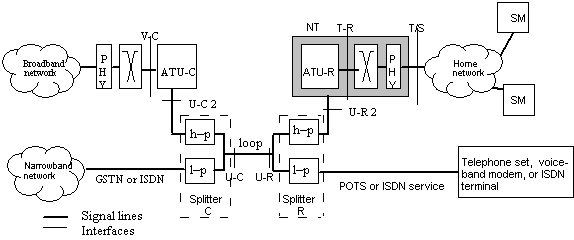You are here
DSL Components
DSL technology consists of two ends, one side is what most of us who have DSL in our homes are familiar with, the Modem or Customer Premise Equipment (CPE). The other side, which end users do not have to worry about, is the Exchange or the Central Office (CO) side.
The distance between the CPE and the CO is called loop length . This is a crucial determinant of what rates you can get at your home which is inversely proportional to the distance from the Central office of your DSL service provider, such as Verizon, SBC or Bellsouth. There are various challenges along the way, including but not limited to channel noise, echo, crosstalk, interference from Amateur Radio and other impairments, that can reduce the net data rate to your home.
On the bright side, DSL is not so much impacted by other users in your area, except that there maybe some degradation due to Crosstalk, if there are several DSL connections within the same binder of telephone cables. This is however, not as much as what Cable Modem users might see during 'peak hours', when several people are logged on at the same time. But it is as of today, a fact that cable modem users are seeing consistently higher data rates at off peak hours than DSL for the same price, here in the US, which is why Cable is still the most popular broadband medium, however, that has shown signs of changing in the near future.
SBC Yahoo is already providing DSL at very competitive rates of about 15 bucks a month for a 1 year term. Add this to a basic local phone service and you pay less than 40 bucks a month for atleast one year. This compares much more favorably to Cable costs which exceed 70 bucks even for Basic Cable plus High speed Internet.

Figure 1: DSL Block Diagram [Diagram Source: ITU 992.1 Standards]
ATU-C = Central Office (CO)
ATU-R = Customer Premise Equipment (CPE)
h-p = High Pass that allows data transmission
l-p = Low Pass that allows voice conversations
loop = Channel or line in between CPE and CO
Narrowband Network: For phone conversations or Dial Up networking services
Broadband Network: For broadband services such as DSL or Cable & data related services like VoIP.
